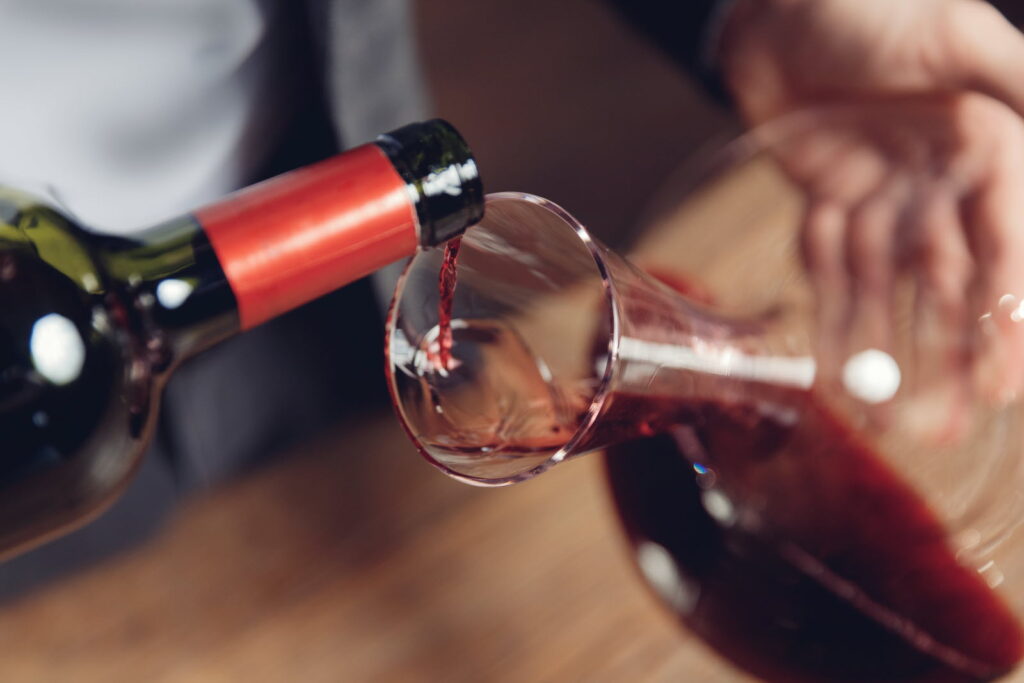The art of wine tasting is full of nuances and subtleties. Every aspect, from grape selection to serving, has its own particularities.
In this context, two terms are often used: "carafer" and "décanter". Although they are frequently used interchangeably, they actually refer to two distinct processes that have varying effects on the wine. Let's take a closer look at these two methods to better understand their differences.
Decanting wine
Decanting is a widely used practice, especially for young wines. Its main purpose is to help these wines develop and reveal their flavors and aromas.
The decanting process involves pouring the wine into a decanter with a wide base. This particular shape maximizes the surface area of the wine exposed to air, thus promoting oxygenation. When the wine is in contact with the air, it "breathes", opening up and releasing its aromas. This technique is very effective with young, tannic red wines, which can be somewhat aggressive when fresh. Decanting softens their flavors, making them more enjoyable to drink.
Wine decanting
Decanting, on the other hand, is a practice reserved for older wines. Over time, wines can develop sediment, solid particles that can cloud the wine's clarity and, in some cases, alter its taste.
Decanting involves pouring the wine gently and methodically into a decanter, so that the sediment remains in the original bottle. The wine in the decanter is thus clearer and cleaner, free of any sediment that may have a bitter or unpleasant taste.

The differences between decanting and carafage
If we were to highlight a major distinction between these two processes, it would lie in their purpose. Decanting aims to improve the taste and aroma of young wines, while decanting aims to remove unwanted sediment from older wines. The decanting method also differs between the two.
When decanting, the wine is poured relatively quickly into the carafe to promote aeration, whereas when decanting, the wine is poured slowly and carefully to avoid disturbing the sediment.
In terms of timing, decanting is generally done just before serving the wine, as aeration is a fairly rapid process. Decanting, on the other hand, can take much longer. You need to give the sediment time to settle to the bottom of the bottle, a process that can take several hours, or even a whole day for some wines.

Conclusion
In conclusion, decanting and decanting are two distinct methods of wine preparation, each with its own advantages. Decanting can help release the aromatic potential of a young wine, while decanting removes unwanted sediment from older wines, improving their clarity and taste.
Understanding these nuances can greatly enrich your wine-tasting experience and help you fully appreciate each bottle. So the next time you open a bottle, you'll know exactly how to prepare it for optimal tasting. What's more, Oeni will be there to help you. Don't wait, download it on iOS or Android.





